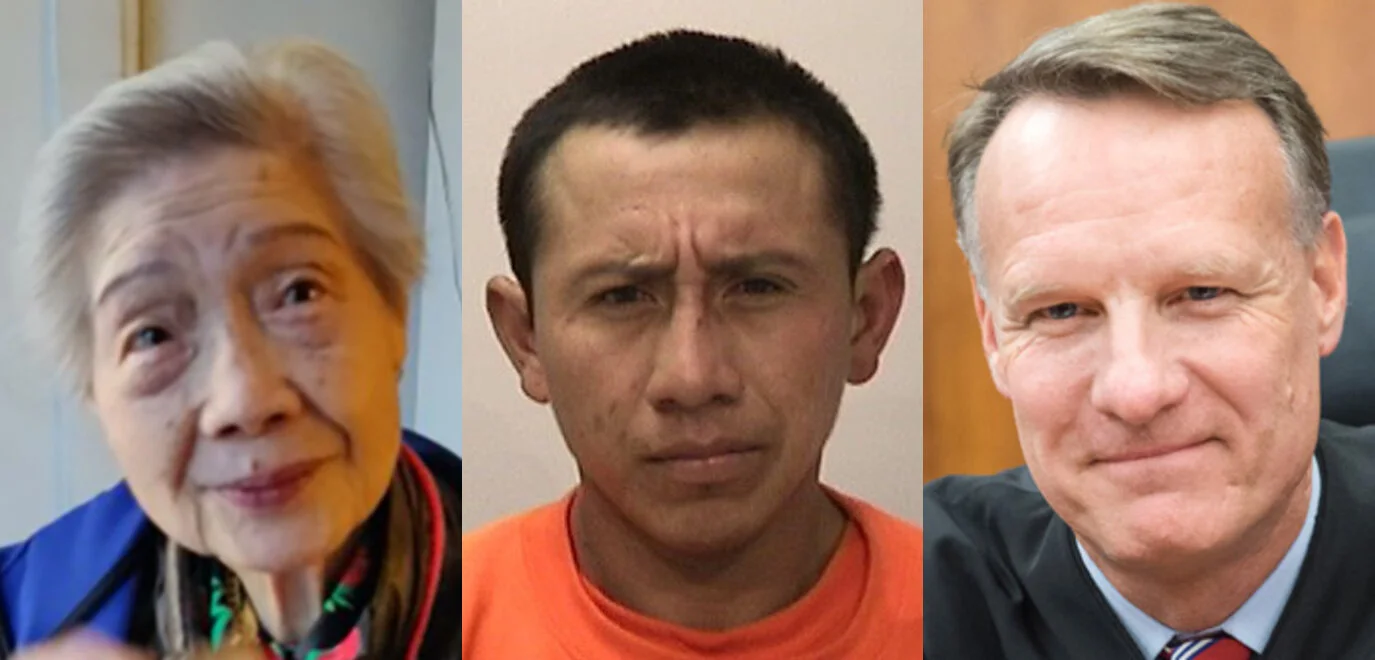A Judge With No Name?
The victim, suspect, and judge.
By Joel P. Engardio
When a 94-year-old woman was stabbed on the sidewalk outside her Lower Nob Hill home, local media in San Francisco named the victim and the suspect — but curiously never named a central figure in the story: Superior Court Judge Richard Darwin. This is a disservice to the public.
Here’s the full story: Judge Darwin saw Daniel Cauich in his courtroom on burglary charges two weeks before Cauich allegedly stabbed Ahn Taylor. Judge Darwin put Cauich back on the street with an ankle monitor despite Cauich’s extensive criminal history, which included a previous murder charge.
Multiple news outlets reported that a judge had denied District Attorney Chesa Boudin’s request to detain Cauich on the burglary charges. But the news reports only referred to “a judge” or “the judge” without ever naming Judge Darwin.
It’s important to name the judges who make controversial rulings — especially when they release a suspect like Cauich who has a long rap sheet and goes on to get arrested for stabbing an elderly widow.
We know it was Judge Darwin who released Cauich because the Court Watch program of my group Stop Crime SF obtained the transcript of the hearing. Read the transcript here.
Judges are elected by voters in California, which makes them political figures. Nearly every judicial candidate seeks endorsements from political clubs and elected officials. Yet judicial elections are low information and down ballot races. Voters know little or nothing about who sits on the bench.
That’s why our Court Watch volunteers monitor trials and hearings. They put judicial actions into a database that could show patterns of behavior over time. The data will help voters make informed decisions.
Is it a conspiracy that news outlets didn’t name the judge who released Cauich? No. If you’re not in the courtroom, it’s a lot of extra work for a reporter to find out who the judge was. Court documents aren’t always clear. Simply looking at the name listed next to a department number is not reliable because judges are often swapped in and out. The only surefire way to know who presided at a hearing is to review the transcript — which isn't easy to obtain.
Newsrooms of the past had the staff and resources to track down more information. Today’s bare-bones news operations can’t spare the hours to deal with the court clerk bureaucracy or the $40 it takes to expedite transcript orders that could take weeks.
It was easier for local media to focus on the dueling tweets between the police union and District Attorney Boudin, who love to blame each other for everything that goes wrong.
“Chesa Boudin says he can’t prosecute if SFPD doesn’t arrest. This suspect was arrested 5 times in 2020 on multiple burglary charges. When he stabbed this woman, he was on an ankle monitor. What do you have to do to actually go to jail in SF?” was the first shot by the Police Officers Association.
“Our office filed a motion to detain Mr. Cauich in jail. The court disagreed & released him on an ankle monitor,” Boudin fired back.
In a case as high profile as the violent attack of yet another Asian senior in San Francisco, it’s worth the time and $40 to tell the full story.
If the local media isn’t able to tell us more about the 52 Superior Court judges who serve San Francisco, the Court Watch program at Stop Crime SF will.

